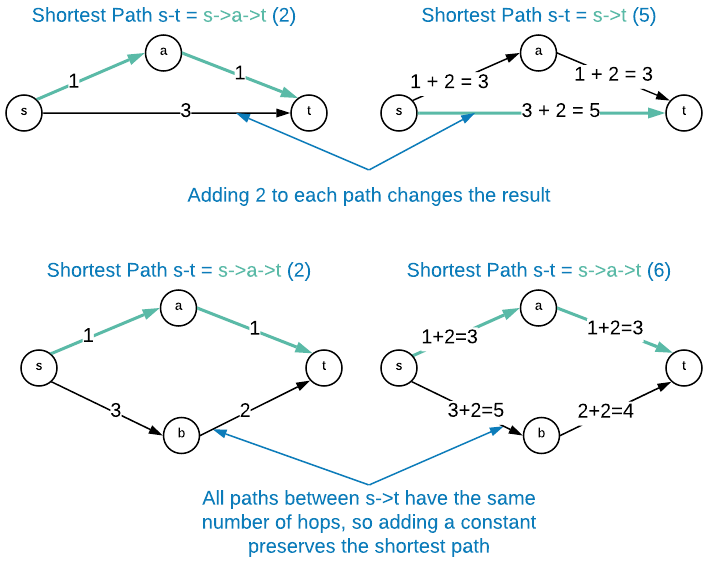- Reduces the all pairs shortest path problem to $n$ iterations of Dijkstra’s algorithm while accommodating negative edge lengths.
- Reduces to:
- 1 invocation of Bellman-Ford
- $n$ invocations of Dijkstra’s
Suppose $G=(V,E)$ is a directed graph with edge lengths. Obtain $G^\prime$ from $G$ by adding a constant $M$ to every edge length. The shortest path between a source $s$ and a destination $t$ is guaranteed to be the same in $G$ and $G^\prime$ when all $s-t$ paths of $G$ have the same number of edges.

Steps:
- Add a new vertex ($S$) to graph with a zero weight edge to every existing vertex. This ensure that every vertex is reachable from a source vertex.
- Compute the shortest path from $S$ to every other vertex using the
Bellman-Ford algorithm.
- If a negative cycle exists, report and quit
- Re-weight the vertices using $e_w = e_w + P_u - P_v$
- $e_w$ = edge weight
- $P_u$ = shortest path calculation for tail
- $P_v$ = shortest path calculation for head
- Run Dijkstra’s algorithm for every $v \in V$
- Restore the original weights by using $e_w = e_w - P_u + P_v$
Applications
- List of commonly used application
Asymptotic Complexity
\(O(nm\log_2{n})\)
Pseudo Code
inputs:
input 1
input 2
side effect(s):
effect 1
effect 2
returns:
some value
invariants:
1 = 1
// intialize variables
function:
code here
code goes in here
Source Code
Relevant Files:
Click here for build and run instructions